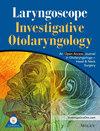The incidence of human papillomavirus (HPV)-related oropharyngeal cancers has increased such that they are now the most prevalent HPV-related cancer. In 2020, the Food and Drug Administration (FDA) expanded the indication for Gardasil-9 to include the prevention of oropharyngeal and other head and neck cancers caused by selected HPV types, but uptake remains low. Otolaryngology office interactions may provide opportunities to increase uptake, given the relevance of HPV to clinical practice. This study explored the feasibility of recommending HPV vaccination in otolaryngology clinics.
Participants were recruited between February to June of 2022 from the alumni of the residency and fellowship training programs at the University of Iowa Hospitals and Clinics. Participant interviews comprised open-ended questions pertaining to otolaryngologists' attitudes toward HPV vaccination recommendation. Interview recordings were transcribed, coded, and analyzed for themes.
Participants were willing to respond if patients asked about the HPV vaccine, although a common attitude toward vaccine discussions was that they were a pediatrician's responsibility. One barrier to recommending HPV vaccination was providers' concern that discussing the vaccine when not directly relevant to the patient's chief complaint could result in patient frustration. Nevertheless, participants endorsed the feasibility of discussing the vaccine during follow-up visits after the patient's needs had been addressed or via the distribution of educational materials to patients.
Otolaryngologists do not currently identify recommending HPV vaccine uptake as their clinical responsibility. While such recommendations may not be feasible in every patient encounter, there could be a role for this in the appropriate clinical scenario. These findings can be used to inform interventions aimed at recommending the vaccine in otolaryngology clinics.


